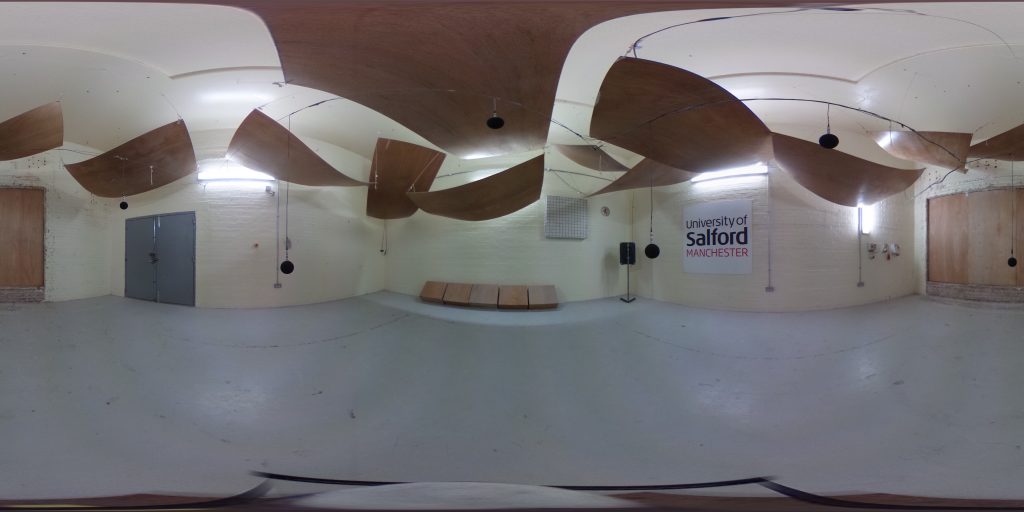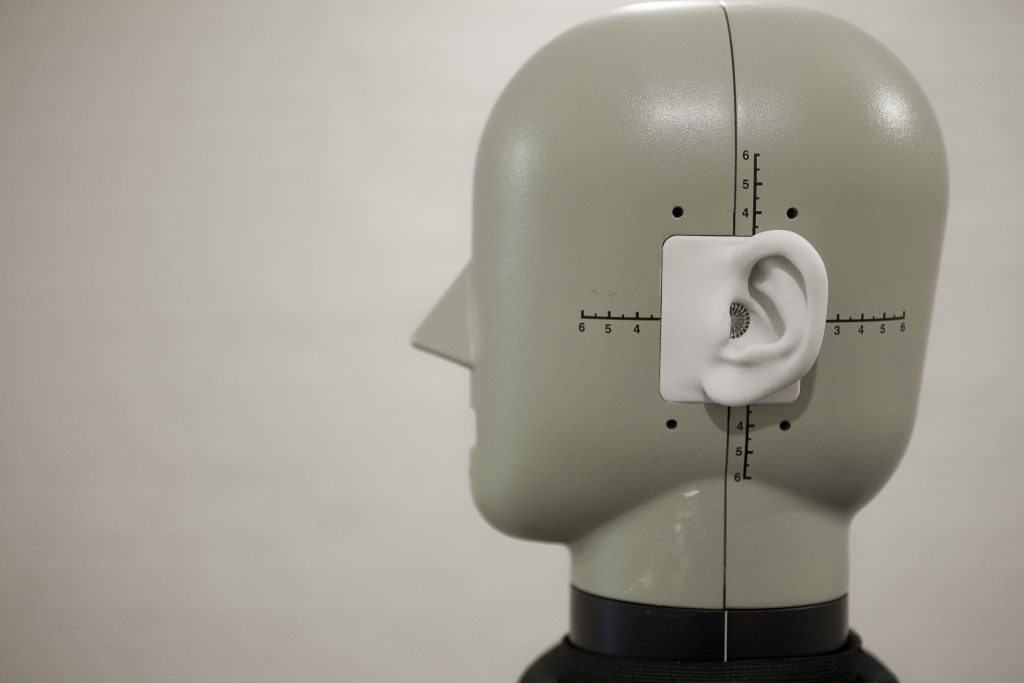Architecture and Building Acoustics

We spend about 90% of our time indoors, and consequently the acoustic quality of buildings is vital to well-being. Our research looks at all different building types: theatres, recording studios, schools, homes, open plan offices etc. Our research:
- Reduces noise indoors to improve quality of life.
- Improves speech intelligibility of announcements to improve accessibility.
- Develops absorbing and diffusing treatments for rooms.
- Creates new approaches for measuring and predicting how sound moves within rooms and buildings.
- Develops understanding of how people respond to sound indoors.
- Creates new measurement methods incorporated into international standards (e.g. BS ISO 17497-2:2012; ISO 140-18: 2006 and BS EN 15657-1:2009)
Current and future research focus includes:
- Modern Methods of Construction
- Building ‘Digital Twins’
- Sustainable metasurfaces and metamaterials for architecture
Archive of old projects
Acoustic treatments and elements
- Acoustic diffusers for performance spaces
- Absorption of theatre seating (EPSRC GR/F05251/01)
- Turning Schroeder diffusers into room acoustic absorbers
Predicting sounds in rooms
- Time domain boundary element models
- Enhanced Acoustic Modelling for Auralisation using Hybrid Boundary Integral Methods (EPSRC EP/J022071/1)
- Adaptive beam tracing for room acoustic modelling
- Scattering coefficients for geometric room acoustic models
- Sound insulation for lightweight profiled metal cladding systems (EPSRC GR/H77088/01)
- Boundary Element Methods in the frequency domain (summarised in Acoustic Absorbers and Diffuser)
Design of the acoustics of spaces
Measurement in architectural acoustics
- Measurement of rooms using naturalistic signals
- Diffusion and scattering coefficients for room surfaces (incorporated into BS ISO 17497-2:2012)
- Measurement of rain noise (incorporated into ISO 140-18: 2006)
- Characterising sources of structure-borne sound (incorporated into BS EN 15657-1:2009)
Perception of sound in rooms
- Low frequencies in small critical listening spaces
- Perception of reverberation time in small listening rooms
- Subjective perception of seat dip attenuation
- The sensitivity of listeners to early sound field changes in auditoriums
General contact: Architectural and Building Acoustics
Please contact Trevor Cox at t.j.cox@salford.ac.uk.
